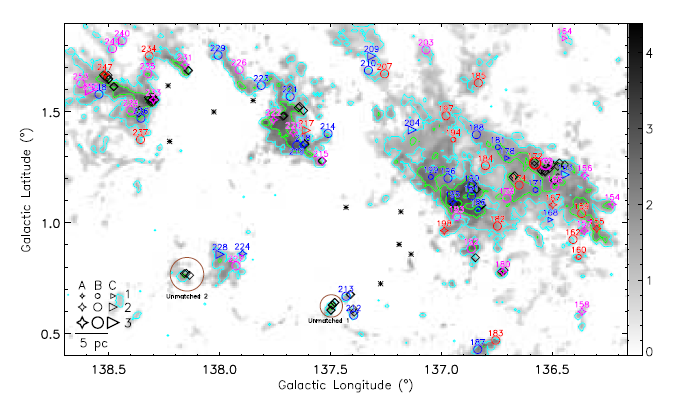A large-scale 12CO (J=1→0) outflow survey (over~110 deg2) were conducted by authors from Purple Mountain Observatory (PMO) toward the W3/4/5complex and its surroundings using the Purple Mountain Observatory Delingha 13.7 m telescope. The datawere parts of the Milky Way Imaging Scroll Painting Project (MWISP) -- a largeongoing project whose goal is to map CO and its isotopictransitions on the Galactic plane. A total of 459 outflow candidates were detected, of which 284 were in the Perseus arm, 162 in the Local arm, 5 inthe Outer arm and 8 in interarm regions. This indicated that star formation was mainly concentrated to the Galactic spiral arms (especially the Perseusarm).There were a few cases of star formationoccurring in the interarm regions, and they were goodexamples to study relatively isolated star formation.The W3/4/5 complex in the Perseus arm, especially in the eastern high density layer (HDL) where the W3 complex neighbors the W4 complex, presented intensestar formation activities (see Figure 1). Most of the star formation in thesecomplexes were likely impacted by theHII regions surrounding them.The paper was published in the Astrophysical JournalSupplement Series (2019, ApJS, 242, 19). 
By with Li Yingjie Fig. Outflow candidate distribution in the W5 complex.The markers to describe quality level and classification of outflow candidates are placed in the bottom left corner of the panel, where 3, 2, and 1 denote high-, intermediate-, and low-mass outflow candidates (see the criterion in Section 3.3), respectively. The magenta and red/blue colors of the shapes and the indices denote bipolar outflow candidates and outflow candidates that have only a red/blue lobe, respectively. The paper was published in the Astrophysical JournalSupplement Series (2019, ApJS, 242, 19). Detailed information of the paper can be found at:https://iopscience.iop.org/article/10.3847/1538-4365/ab1e55. |
